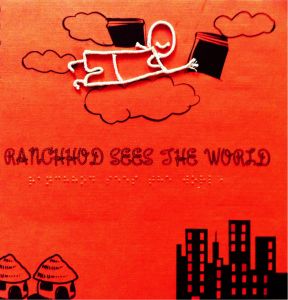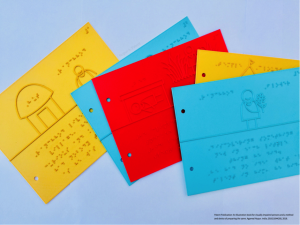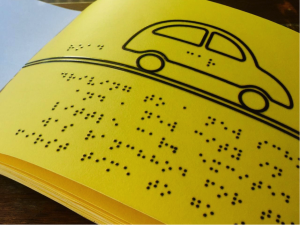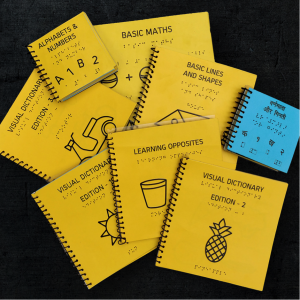It was in 2014, while I was pursuing my Masters at CEPT University, that I started exploring the concept of creating tactile picture books. I started visiting schools for the blind, and met with a few teachers and students there.
Based on that research, I decided to design illustrated picture books for people who are blind and visually impaired. And what started as a college project soon became my motivation.
I wished to bring the world of visuals to the visually impaired community and wanted to spark the love for reading that would last with them for a lifetime. So, I began working on a single book titled “Ranchhod Sees the World.”
I conceptualized the story and the illustrations, then undertook intense research to find the best materials, braille text and other methods available. Initially, the entire book was created manually – thread served as the primary material and the braille story was printed with the help of an old braille typewriter.

Fast forward to 2018: I resumed my research again by visiting blind preschools. This time, thanks to advancements in technology, I came up with an idea to explore the process of 3D printing and toyed with the possibilities of mass-producing a 3D-printed, illustrated book.
I persistently followed through with six months of trial and error. What kept me determined was the joy, which I experienced when the readers interacted with this piece of literature.

Within a few months, I was able to present the first prototype of a 3D-printed illustration book to the children. And it was a hit!
The book received a tremendous response. The children were so fascinated as their fingertips touched and felt the illustrations for the first time. Their faces expressed curiosity, joy, and excitement. It was a moment to savor.
The children were proud when they recognized the shapes of the objects and figures in the illustrations. The illustrations and the story kept each one of them gripped till the end.
Developing and testing it further, I explored embossing methods and materials, which could produce an affordable yet a similar output to a 3D-printed book. And the result there was a success as well. Ultimately, I was able to come up with a cost-effective book designed for the visually impaired community!

Today, the Beyond Braille series has a wide range of illustrated books available, starting from early education books for pre-schoolers to storybooks to books for different grades to world maps and much more.

To learn more about Beyond Braille, visit BeyondBraille.com. You can also follow them on Facebook and Instagram.



